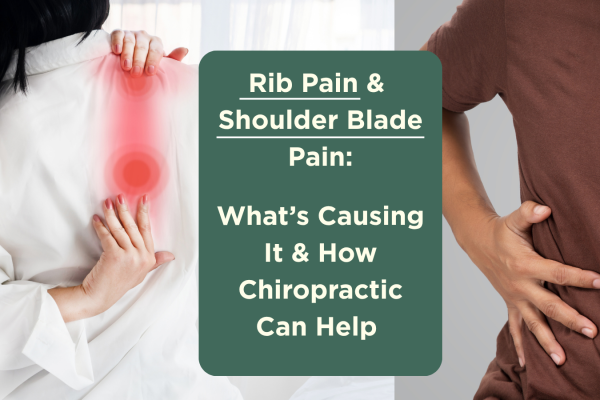
Is It Shoulder Pain, Shoulder Blade Pain, or Something Else?
Not all upper body pain is the same and figuring out whether it’s coming from your shoulder joint, your shoulder blade, or somewhere else entirely can make all the difference when it comes to finding the right care.
At Wellbeing Chiropractic, we often see people unsure where their pain is really coming from. What starts as a dull ache can turn into sharp discomfort, restricted movement, or even trouble sleeping.
Here’s how to tell the difference and what to do next if it’s not going away.
Where Are You Feeling the Pain?
Understanding the location of your discomfort is one of the first steps.
1. Shoulder Joint Pain
This is usually felt in the outer part of the shoulder, especially when:
- Lifting your arm overhead
- Reaching behind your back
- Lying on your side
Common causes include:
- Rotator cuff strain or tears
- Shoulder impingement
- Bursitis or tendonitis
- Frozen shoulder or arthritis
- You may also notice clicking or stiffness with movement.
2. Shoulder Blade Pain (Scapular Pain)
Pain under, between, or around the shoulder blade often feels deeper or more diffuse. People describe it as:
- A sharp stabbing pain
- A dull ache or tightness
- Discomfort when taking a deep breath
Common causes include:
- Rib joint restriction or misalignment
- Postural strain from sitting or desk work
- Tension in upper back or chest muscles
- Nerve irritation or referral from the spine
You might not feel limited in your shoulder movement—but sitting, twisting, or breathing deeply can make the pain worse.
3. Referred Pain or Something Else?
In some cases, the pain may not be coming from the shoulder at all. It may be referred from the neck, spine, or even internal organs.
Warning signs include:
- Pins and needles or numbness in the arms or hands (possible nerve involvement)
- Pain that worsens without movement or that is unrelated to posture (possible non-musculoskeletal source)
- Chest pain, shortness of breath, or nausea (seek immediate medical attention)
What Movements or Positions Trigger It?
Ask yourself:
- Does it hurt when I move my arm?
This usually suggests shoulder joint involvement.
- Does it hurt when I sit, twist, or take a breath?
That often points to rib or shoulder blade issues.
- Is the pain worse after a long day at the desk?
Postural strain or joint stiffness may be involved.
How a Chiropractor Can Help
At Wellbeing Chiropractic, our chiropractors assess not just where the pain is—but why it’s happening.
We look at:
- Spinal and rib joint movement
- Shoulder mechanics and posture
- Muscle tension and imbalances
- Nerve involvement
- Breathing patterns and ergonomics
Based on your assessment, your care plan may include:
- Gentle chiropractic adjustments to the spine or ribs
- Postural and movement correction
- Stretches or exercises to support the shoulder and upper back
- Breathing and ergonomic advice to reduce tension and recurrence
Whether the issue is muscular, joint-related, or nerve-based, our goal is always the same—helping you move better, feel stronger, and get back to the things you enjoy.
When Should You Get It Checked?
It’s time to book in if:
- The pain has lasted more than a few days
- You’re avoiding certain movements or positions
- It’s affecting your sleep, work, or daily life
- You’re not sure where it’s coming from
The earlier we assess it, the sooner we can address the cause—and the less likely it is to turn into something more persistent.
Author




